I had heard about Mine Tours prior to visiting Bolivia and had made up my mind about them long before I entered the country.
Absolutely no way would I be doing a Mine Tour.
I had no desire to do a tour that profited off of other people’s suffering. I believed that trips of this nature were completely unethical and that they also encouraged an us and them divide. I had no interest in using those less fortunate than myself to make me feel better about my own problems.
And then, a couple of months later, I was standing outside the entrance a mine, geared up in overalls, boots and helmet, nervously waiting to descend the ladder into the darkness.
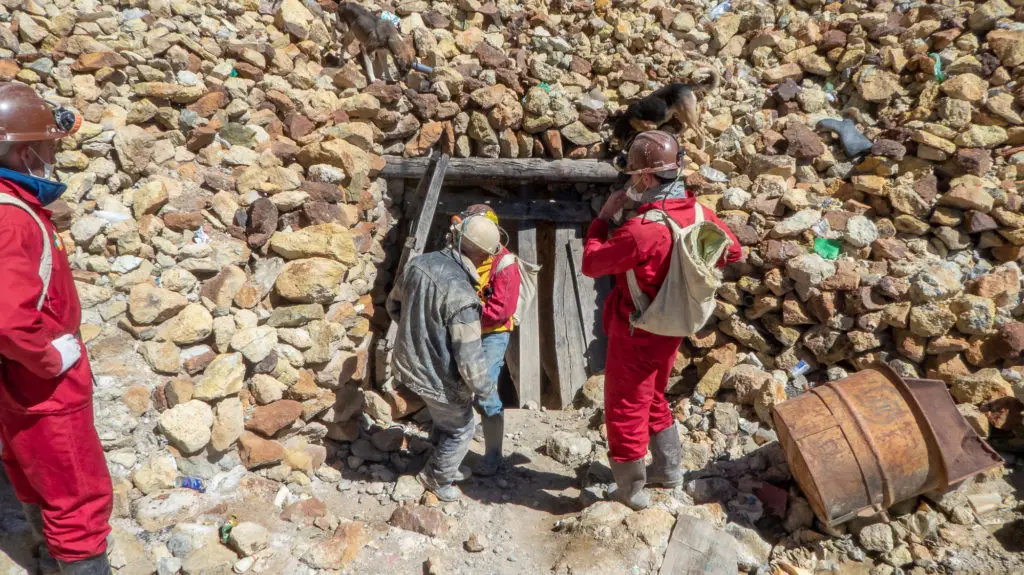
Read about my thoughts on Dark Tourism here!
What made me change my mind about Mine Tours?
I was planning our route around Bolivia and stumbled across Potosí again. The Lonely Planet had advised me it was a must-see place within the country. I started to flick the pages, looking to see what this colonial city had to offer.
Of course, as I expected, the first thing that the guide listed was silver Mine Tours. I closed the book.
I tried to push Mine Tours to the back of my mind but they kept coming back to haunt me. I decided to do some research to conclusively knock the idea on the head.
I expected to find hundreds of reviews saying what an awful experience being in the mines had been but I found very little of this nature. I also expected a lot of accounts about feeling #blessed and pretty girls posing next to miners. I didn’t see this either.
In fact, the overwhelming majority of what I did find was reviews explaining that these tours were actually hugely beneficial to the miners themselves and that from a traveller point of view, the trips were eye-opening and humbling.
Choosing an ethical Mine Tour
I was intrigued and started to look into the tours more. After reading that a few of the companies based in Potosí were ran solely by ex-miners, my interest piqued again. If tours were being delivered by people who had experienced the mines first hand, I couldn’t imagine them promoting a voyeuristic experience.
After several hours scrolling through web pages and reading reviews, I decided that I couldn’t make up my mind from relying solely on the written word. I needed to experience the mines for myself.
Before I knew it, I had arranged a tour with Potochij Tours, owned by ex-miner Antonio.
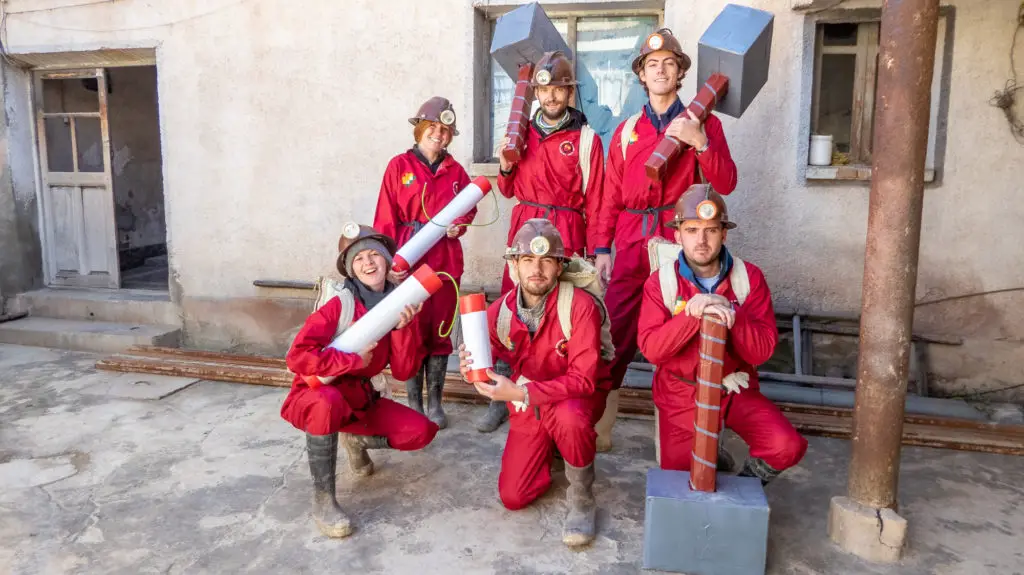
Mine preparation
Prior to heading into the mine, we needed to get our safety gear. We pulled on overalls, boots and helmets. Antonio came and attached lamps to our hard hats and explained how to use them. The whole outfit felt very cumbersome and I couldn’t help but feel that it was solely for the purpose of making the tourists get in character.
After we were all dressed, Antonio came out with some handmade tools of the trade. There were hammer and dynamite (luckily replicas) for us to pose for photos with. This certainly felt a little voyeuristic. Whilst most of the other travellers laughed and joked about going into the mine, I felt uneasy. Had I made the right decision?
We headed to the Miner’s Market to buy gifts for the miners. These consisted of coca leaves, fizzy drinks, alcohol and cigarettes. Hardly the hamper for a healthy life, however, Antonio explained that owing to the inherent danger of working in the mines and the long-lasting health problems, many of the men we met later today probably wouldn’t make it to their fifties. It was a sobering thought.
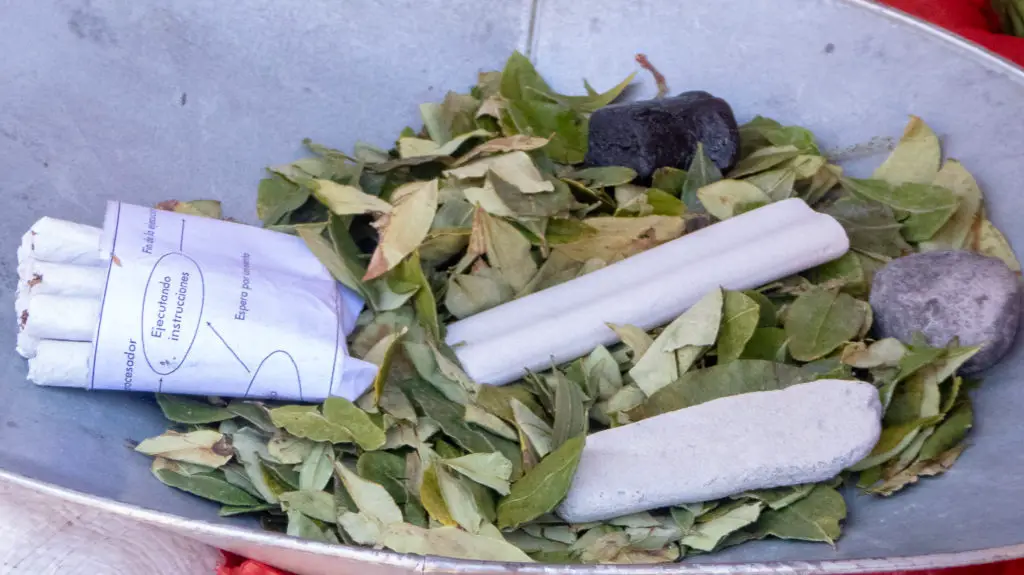
Ready to enter
We made it the mine and stood out in the open whilst Antonio explained a few rules to keep us safe. Mostly, they were obvious but it still made me question what I was about to do. This feeling was only exacerbated as he poured 98% alcohol over the threshold as an offering for Pachamama. He informed us that if we offered something to her, she would be more inclined to keep us safe during our time in the mine.
I felt horribly conflicted about going inside but knew I would never get the opportunity again. I really wanted to believe that these kinds of tours were more than the opportunity to gloat at those less fortunate and actually an experience that could be hugely educational and enriching.
I have always criticised meat-eaters who refuse to acknowledge how steak comes to their dinner tables. I am a firm believer that if you are going to consume something, you should know the realities of where it comes from, even if it is unpleasant. I couldn’t back out now.
Antonio waved us over to the door and we slowly began to descend the ladder. As my foot reached the floor, it occurred to me: I was in an active mine.

Exploring the labyrinth
The first thing that I noticed about the mine was just how cramped it was. Although I am not someone who suffers from claustrophobia, I don’t like the darkness and felt very vulnerable moving through the tunnel hunched over.
With every step, a cloud of dust plumed into the air and it quickly reminded me to pull the surgical mask over my face. This made my lungs felt heavy but at least I was limiting the amount of powder that I breathed in.
I was pleased to note that the clothes and accessories hadn’t been solely for the purpose of getting dressed up for tourist photos. The mine was dusty and we often had to move on our knees or on our bums. Our own clothes would have been ruined within minutes.
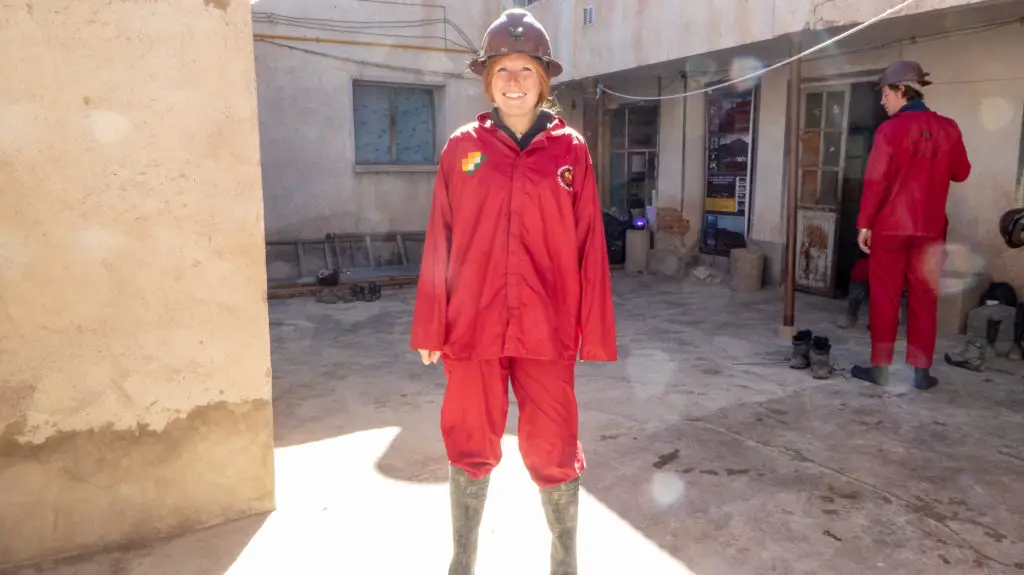
After we had made it into a larger open space, we met the first of the working miners. Surprisingly, the guy was very friendly and took the time to greet our group. Antonio asked if any of us would like to give him something and one of my fellow travellers handed over a fizzy drink. He was very grateful and then said goodbye to head back to work.
As we continued to explore the mine, we met more of the workers who all greeted us with similar enthusiasm. I had worried that the miners wouldn’t like seeing tourists in the mines but in reality, the opposite seemed to be the case.
Antonio explained that whilst there weren’t many unskilled factory jobs located in Potosí, the mines pay very well which is one reason it is an industry that still attracts many young men. Miners will earn around three times what a waiter does in a day so you can see why there is the temptation to do such a dangerous job.
Making offerings to Tio
Whilst it is safer than centuries ago, mining is still one of the world’s most dangerous jobs. As we had already learnt, miners will appeal for their safety and protection from Pachamama (Mother Earth) but also from a devil figure known as Tio.

In Bolivian culture, it is believed that with frequent offerings, Tio will ensure the safety of the miners. Alcohol, coca leaves and cigarettes are commonly left with the model of Tio.
Whilst I initially found these figures to be quite sinister, it made sense to me that the miners would take comfort from the idea that some bigger power was watching over them during their work. As I pondered this, dynamite boomed in the distance and I was once again reminded of how dangerous these underground tunnels are.
Bubbling concerns
Although in the lead up to entering the mine, I had felt like I was the only member of the group with real concerns, this thought was quickly eradicated once we were inside. No more than five minutes had passed when somebody asked, “How long will be staying in here?”
Although our time inside the mine would not exceed an hour, it certainly felt long. Somebody else then asked Antonio about how often accidents happened in the mine. He refused to answer while we were inside, saying it could provoke Pachamama as it was bad luck.
This ominous answer hung in the dusty air as we made our way through the labyrinth and toward the exit.
Reflections on one of the Earth’s darkest places
Even though I had only been in the mine for an hour, I was hugely relieved to get out. The bright colours of the outside blinded me and I felt overwhelmed by the clarity of the air. Despite being at over 4000 m, I finally felt as if I could breathe again.
After thanking Pachamama for keeping the group safe during our tour of the mine, Antonio went on to explain about the health risks and accidents that plague the lives of the miners. As well as tunnels collapsing, explosions from dynamite can also be very dangerous for those who enter and work inside the mines.
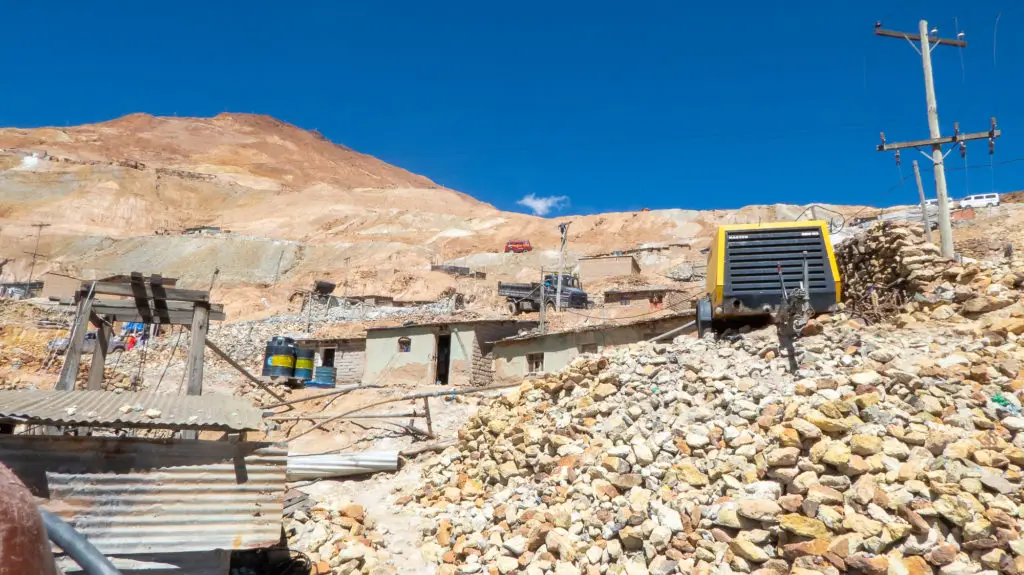
A year prior to our visit, there had been an explosion which had resulted in the death of a miner. The dynamite had blown him to pieces and they had to recover his body in bits. I was shocked and immediately thanked my lucky stars that nothing had happened whilst we had been inside the mine. Immediately after this thought, I felt very selfish for thinking something so self-absorbed.
Ongoing health problems are also huge issues for the workers, even if they leave the mines permanently. After years of exposure to the dust, the lungs will be hugely affected and many miners will suffer from breathing conditions which can eventually lead to their death.
In one month, an average of three miners die from either accidents inside the Potosí mines or ongoing health conditions that stem from working there. It is a scary statistic but one that really drives home the sacrifice that is made for our luxury goods.
Although I was very torn about a visit to the mines, I do not regret my decision to venture inside. Both before entering and during the tour I was scared and also hugely apprehensive about what I would see inside. However, all the workers that I met were hugely friendly and genuinely seemed to appreciate the interest of tourists.
The entrance fee paid by travellers to enter the mines goes directly to medical care for miners when there are accidents and also helps to support their families. It is sad that this is an inevitability of the job but also positive that there is a financial safety net in place.
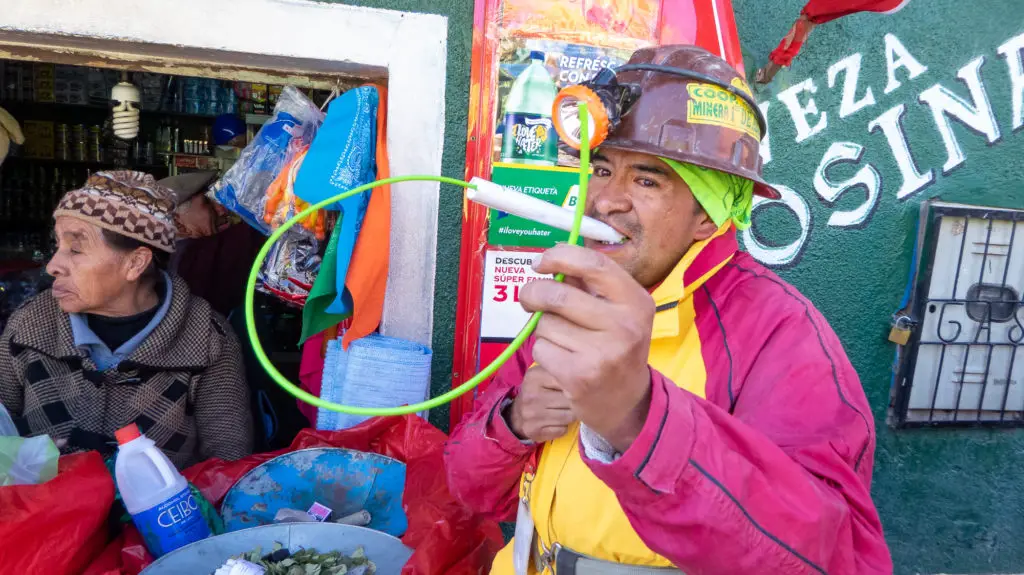
Potochij Tours donate a large percent of the profits made from their Mine Tours directly to the Cooperative mines. Therefore, it is really important to choose a tour company who do not run these tours solely for personal gain but to also make the mining conditions a little bit better.
Despite my concerns, my visit to the mines never felt exploitative or voyeuristic. As a former employee, Antonio engaged all of the miners in conversation and greeted them like old friends. I never once felt like I was intruding and learnt a lot about both Potosí’s history and the mining industry.
Do not tar the purpose of these tours by making them all about you. They do not exist to make privileged white people feel better about themselves. The important thing about these trips is to see first hand the conditions that the miners have to work in and learn about the risks they are exposed to on a daily basis. This is the human price of our luxury items and something each of us must learn to reconcile if we are to continue consuming such goods.
Would you go on an ethical mine tour? Do you even think such a thing exists?



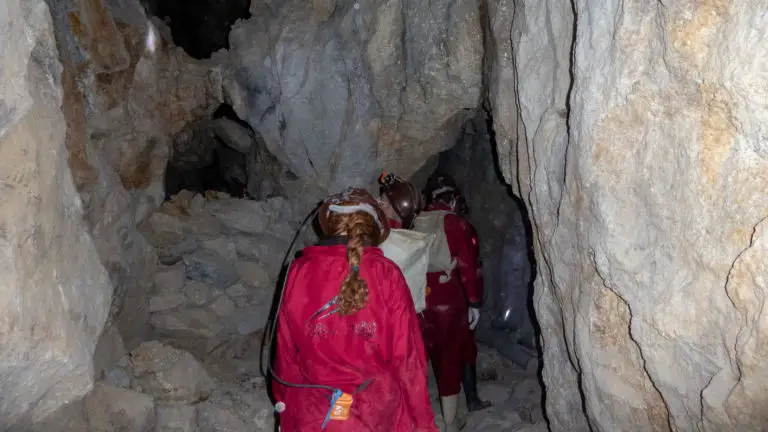

You know, I never thought about touring a mine as something that may be unethical. I mean I have only ever toured one mine and it had been closed for years (30-40 or more!). I had no idea you could tour active mines. It is incredibly sad that most of the men who work in the mines won’t make it to 50! That is insane. Thanks for the post – it really made me think!
When I first heard about the mine tours I felt very conflicted. I’m definitely glad I did my research beforehand because I think a bad experience would have really got to me! Where did you tour a closed mine? I would be keen to do that too!
Hey Sheree, would you recommend Potochij for the mine tours? I am going to Bolivia in 2 weeks and know I want to check out the mines, although I’m really really really nervous about it…. Good to know that they are only 1 hour inside the actual mines. I’m so scared!
If you think Potochij is reputable, ethical and treats their guides/employees well with most of the profit going to the workers, I’ll look into booking with them! Thank you.
Hi Elsa! I was also very nervous before entering the mine but we had a really positive experience. As Antonio (the owner of Potochij Tours) is an ex-miner and guide, I think his company is a great choice. He comes from a family of miners and treats everyone who works inside the mine with respect. I thought that the tour felt less like a tourist attraction and more like a local guiding you around. Definitely a more personal vibe than I expected.
I can’t remember the exact figures of what percentage of the tour price goes to the miners but you could always ask in their office once you arrive in Potosí. We had a chat with Antonio before arranging the tour and he explained everything. Tours run in both the morning and afternoon daily so you shouldn’t have any trouble arranging a trip when you arrive in Potosí, even at short notice. Hope that is helpful and I hope you have a really positive experience.
This is nice but I have questions. What did you think of the whole time? Is it really safe? Do the mines smell of something? I know I’m being weird but I’m just really interested, don’t have any money yet to go there. Anyway, Thanks for this!
It is an active mine so that is an important thing to consider. Of course, accidents are possible and do happen on a regular basis so you need to be sure that this is something you definitely want to do before you go inside.
During the actual tour, Antonio did a great job at making us all feel relaxed and I was fascinated by the history of the mines. As for smells, it doesn’t really smell of anything, just the same sort of empty smell that you usually experience when you go underground. It was definitely an experience I’ll never forget!
Thanks Sheree! I emailed the tour company and will arrange something for when I go next week. Thanks for the recommendation 🙂
That’s great to hear Elsa! Hope you have a great visit, let me know how it goes 🙂
I’m back from my wonderful Bolivia trip. Sheree, wanted to say thank you for putting Potochij Tours on my radar. I booked it via my hostel (Casa Blanca – great hostel btw) as they are partners. I was very nervous (as I mentioned!) about the tour, how deep we were going to go, and the general condition of the mine. Antonio was my guide and he was great. My POV: the mine wasn’t as claustrophobic/small as I imagined but it was a lot harder of a tour than I expected, emotionally. Everything Antonio told us that day broke my heart. I teared up a little when he was telling us about his family. I highly recommend everyone to take this tour, the money directly goes to the workers and we were able to pick up gifts and say hi to some of the workers (since they were all Antonio’s friends). Last thing, the tour inspired me to go to Casa Moneda which was a great little museum in city center that explained the history of the silver, minting currency for the Spanish empire and the importance of Potosí in the world today. I encourage everyone to check it out – it was incredibly informative and well-preserved. Casa Moneda tied together an entire day of history for me and I now have a brand new appreciation for this UNESCO city.
Hi Elsa! I am so pleased that you had an amazing time! Comments like this make me remember why I run this blog 🙂
The mine tours are without a doubt, hard to digest. I found my visit to be very hard-hitting but also felt like it was very necessary to see the realities behind the goods that we in the western world so readily consume.
I didn’t get the chance to go to Casa Moneda but have heard great things about the museum. It sounds fascinating! I will definitely have to put it on my list for if I make it back there!
Thanks so much again for your comment and hope your next trip is as full of adventure as this one has been!
I don’t know how to reply to your comment about the closed mine above – but it was in Alberta at the Bellevue Underground Mine. It was on a field trip in grade 7 or 8 to a place called Frank. It was a town where a mountain fell and buried a good chunk of the town. There were two very significant mine incidents at Bellevue and a mine called Hillcrest in the area. It was pretty incredible but sad thinking of all of those people who died in the accidents. I do have a blog post about Frank Slide on my blog I can send you if you are interested. I’ve linked it as my website for this comment.
Great, thanks Crystal! I’ve just had a look 🙂 What an interesting place! Just think, it could have been that trip that triggered your interest in the macabre!
I loved this article. Like Crystal, I didn’t realise you could tour active mines, so having only been in non-active ones, I also never considered it an ethical issue. But this was incredibly interesting, and whenever we make it to Bolivia (*fingers crossed*) I’ll definitely be looking this up (and Potochij Tours). I really like that it’s done with an ex-miner as that makes it so much more personal. Not really the same thing, but we did a street art tour with a street artist, and I loved that he knew everyone we came across and would stop to chat and then introduce us. It added a touch to it that other tours we’ve done with street art enthusiasts just didn’t have.
As a side note, the outfits do look incredibly bulky and uncomfortable… and hot. In my mind they are SWELTERING.
You definitely need to go! Bolivia is such an incredible country and definitely my favourite of the three that we visited during our South America trip.
That street art tour sounds amazing too! It definitely makes a difference doing a tour with someone with insider knowledge. Antonio did a great job in making us feel welcome and safe but he also treated the miners as friends which was really nice to see.
The outfits weren’t actually too bad! Potosí is ridiculously high so the altitude actually makes things a bit chilly – in some ways a relief because they were pretty bulky!